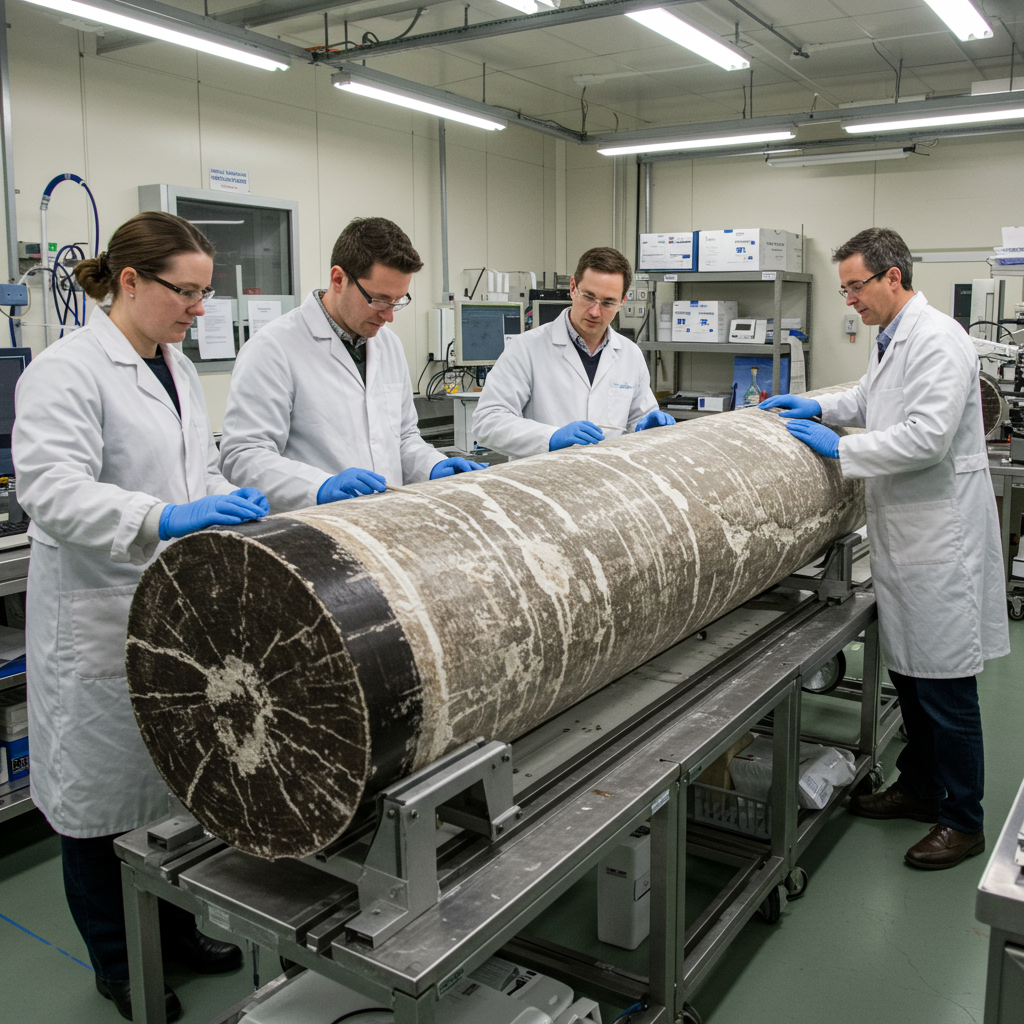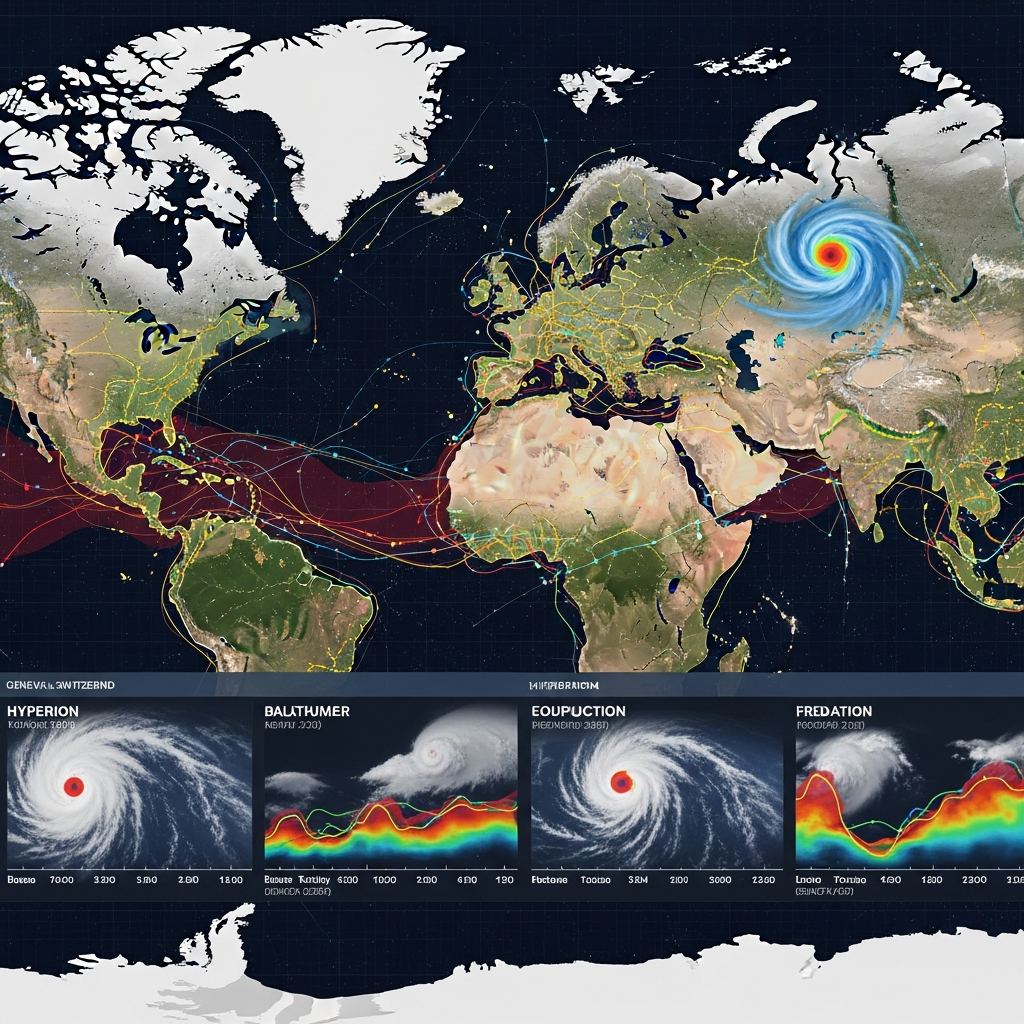Deep within the frozen heart of Antarctica lies an unparalleled archive of Earth’s climate history. Scientists have successfully extracted and transported the planet’s oldest known ice core, a remarkable 1.5-million-year-old cylindrical time capsule, to the British Antarctic Survey (BAS) in Cambridge, UK. This extraordinary ancient ice core is set to undergo meticulous analysis, promising to unlock vital secrets that could fundamentally reshape our understanding of past climate shifts and guide our response to future environmental challenges.
Unveiling Earth’s Oldest Ice Archive
The glassy cylinder, described as the planet’s most ancient ice, was meticulously drilled from an astonishing depth of 2.8 kilometers beneath the Antarctic ice sheet. This depth is equivalent to stacking over eight Eiffel Towers end-to-end, underscoring the immense scale of the undertaking. Frozen within this pristine sample are eons of atmospheric composition, volcanic activity, and environmental conditions, offering an unprecedented look into Earth’s climate history that could revolutionize current scientific models.
From the Frozen Frontier to the Lab: A Monumental Journey
The extraction of this invaluable ancient ice core was a colossal, multinational endeavor, costing millions and requiring years of dedicated effort. Engineer James Veale, a key member of the team in Antarctica, shared the immense care involved in handling the meter-long ice blocks. He described the feeling of holding these precious sections in his carefully gloved hands as “amazing,” highlighting the delicate nature of the work. The drilling site was located approximately 40 kilometers from the Italian-French research station, Concordia, in eastern Antarctica.
After extraction, the ice cores were initially stored in a specially constructed ice cave on the continent. From there, they embarked on an epic journey, first by ship and then in a specialized cold van, to their destination in Cambridge. Cross-sections of the 2.8-kilometer core were also distributed to two other leading international institutions in Germany and Switzerland, emphasizing the collaborative spirit driving this global scientific pursuit.
Inside the Time Capsule: A Glimpse into the Past
Upon arrival at the British Antarctic Survey, the ice core segments were carefully transferred to a custom-built, -23°C freezer room. Dr. Liz Thomas, who leads ice core research at BAS, emphasized the unique nature of this sample, calling the period it represents a “completely unknown period of our Earth’s history.” Stepping into the intensely cold chamber, where red warning lights flash and an emergency escape hatch hints at the extreme conditions, visitors are limited to 15-minute intervals. The sheer cold causes camera shutters to freeze and hair to crackle with ice, a testament to the harsh environment scientists endure to preserve these samples.
On a worktop, Dr. Thomas points to the oldest sections, gleaming and so transparent that hands can be seen through them. These remarkable samples contain not just ancient water but also trapped air bubbles, microscopic dust particles, fragments of volcanic ash, and even tiny marine algae known as diatoms. Each of these components acts as a proxy, providing scientists with critical information about wind patterns, past temperatures, and ancient sea levels stretching back over a million years.
The Scientific Unlocking: Melting Secrets
Over seven painstaking weeks, Dr. Thomas and her team will slowly and precisely melt sections of the hard-won ice. As the ice transforms into liquid, it releases these ancient inclusions, which are then meticulously analyzed. The resulting liquid is fed into highly advanced machines in an adjacent laboratory, one of the very few facilities worldwide equipped for such intricate science.
A key instrument in this process is the inductively coupled plasma mass spectrometer (ICPMS). This powerful tool measures over 20 different elements and trace metals within the melted ice. These include rare earth elements, various sea salts, and marine elements, as well as indicators of past volcanic eruptions. By identifying and quantifying these chemical isotopes, scientists can reconstruct detailed environmental profiles, understanding rainfall patterns, atmospheric composition, and even the force of ancient winds from 800,000 to potentially more than 1.5 million years ago. This forensic-level analysis forms the bedrock of paleoclimate research.
Decoding the Mid-Pleistocene Transition: An Unsolved Mystery
A primary objective of this groundbreaking research is to unravel the enigma of the Mid-Pleistocene Transition (MPT). This mysterious shift, which occurred roughly between 800,000 and 1.2 million years ago, saw a dramatic change in Earth’s glacial cycles. Prior to the MPT, the planet experienced predictable cycles of warmer eras transitioning to cold glacial periods (when ice sheets covered much more of Earth) approximately every 41,000 years. However, this rhythm abruptly switched to a much longer 100,000-year cycle.
The cause of this profound alteration in Earth’s climate system remains one of the “most exciting unsolved questions” in climate science, according to Dr. Thomas. By analyzing the unique signatures within this ancient ice core, scientists hope to find crucial evidence that illuminates the drivers behind this significant global climate reorganization, shedding light on Earth’s natural “tipping points.”
Past Climates Informing Future Risks
The data extracted from this Antarctic research could reveal periods over 800,000 years ago when natural carbon dioxide (CO2) concentrations in the atmosphere were as high as, or even higher than, current levels. This historical context is invaluable for understanding the long-term responsiveness of our planet to warming gases. While Earth has experienced naturally high greenhouse gas levels in the past, Dr. Thomas emphasizes a critical distinction: the unprecedented rapidity of the human-induced rise in warming gases over the last 150 years. This rapid acceleration is pushing the planet into “uncharted territory.”
Scientists hope that the comprehensive record of Earth’s environmental history locked within the ice will provide crucial guidance as we navigate future climate challenges. The ice core may also contain evidence of past periods when sea levels were significantly higher than today and when the colossal Antarctic ice sheets were considerably smaller. The presence and composition of dust within the ice will help scientists understand the mechanisms by which these ice sheets shrank and contributed to sea level rise – a major global concern for the current century. This work offers vital insights into the potential impacts of continued warming on global sea levels.
Frequently Asked Questions
What is the significance of the 1.5-million-year-old ice core?
This extraordinary ice core is the oldest ever retrieved, offering an unprecedented window into Earth’s climate history, particularly a mysterious period called the Mid-Pleistocene Transition (MPT). During the MPT, approximately 800,000 to 1.2 million years ago, Earth’s glacial cycles dramatically shifted from a 41,000-year rhythm to a 100,000-year cycle. By studying the trapped air and other elements, scientists aim to understand this major climatic reorganization and gather insights into natural carbon dioxide levels and “tipping points” in Earth’s distant past, informing our understanding of current and future climate change.
Where is this ancient ice core being analyzed and by whom?
The primary analysis of this ancient ice core is taking place at the British Antarctic Survey (BAS) in Cambridge, UK. The research is led by Dr. Liz Thomas, head of ice core research at BAS, with contributions from a multinational team of scientists. Sections of the 2.8-kilometer core have also been sent to leading scientific institutions in Germany and Switzerland, fostering a collaborative international effort to maximize the scientific output from this unique sample.
What specific scientific methods are used to extract climate data from the ice core?
Scientists at the British Antarctic Survey employ advanced techniques to extract and analyze data from the melted ice. Over seven weeks, the ice is slowly melted, releasing trapped atmospheric gases, dust, volcanic ash, and even microscopic marine algae (diatoms). The resulting liquid is then fed into specialized machines, including an inductively coupled plasma mass spectrometer (ICPMS). This instrument measures over 20 elements and trace metals, providing detailed information on past wind patterns, temperatures, rainfall, and even ancient volcanic eruptions, allowing scientists to reconstruct Earth’s paleoclimate.
A Glimpse into the Future
The ancient ice core represents more than just a scientific curiosity; it is a profound testament to the Earth’s dynamic past and a crucial guide for its uncertain future. The diligent work of scientists like Dr. Liz Thomas and engineers like James Veale underscores the global commitment to understanding our planet. As the delicate melting and intricate analysis continue, the secrets held within this glassy cylinder promise to provide invaluable data, helping humanity better prepare for and adapt to the unfolding realities of climate change. This ongoing Antarctic research truly represents a deep dive into the very fabric of our planet’s environmental story.




